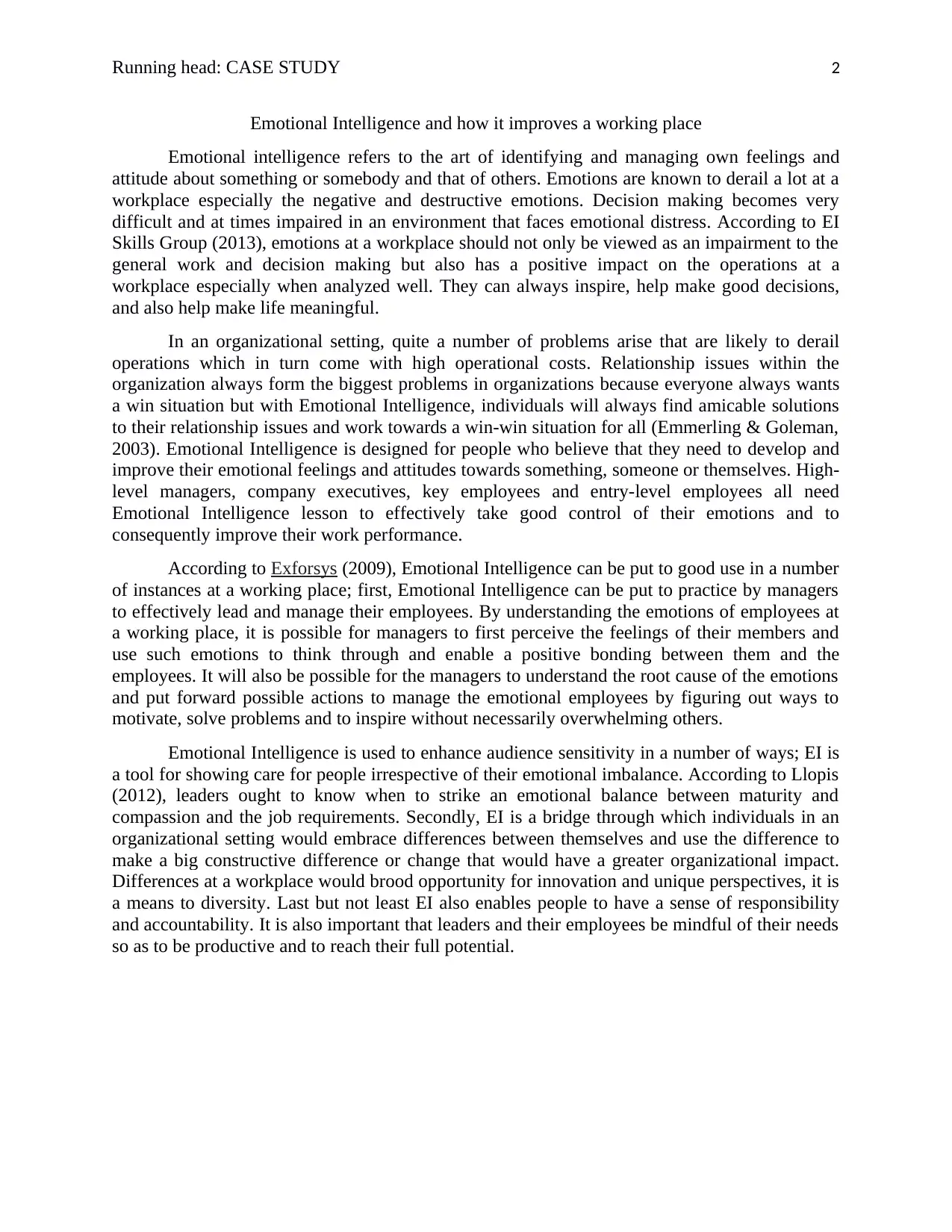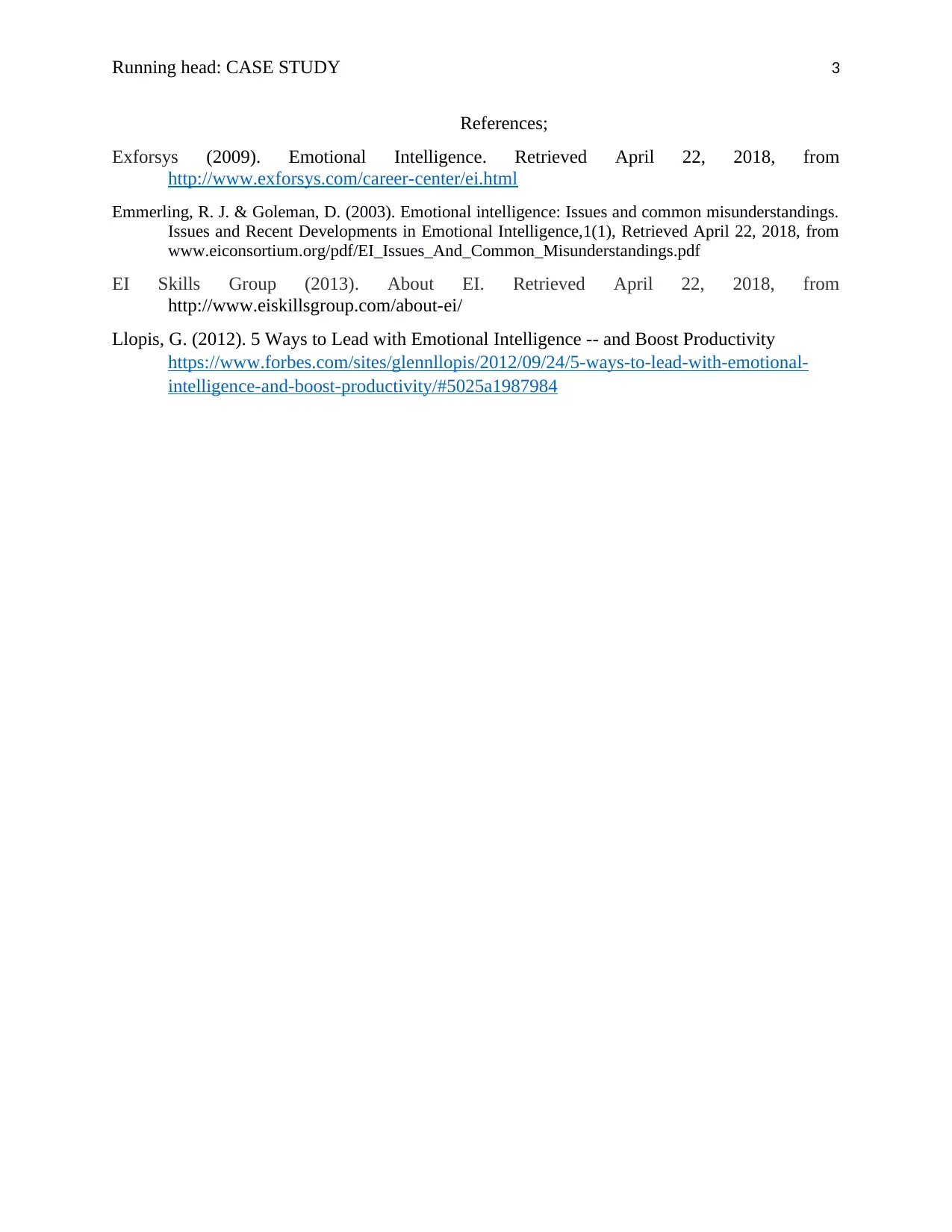Emotional Intelligence: Enhancing Workplace Performance and Culture
VerifiedAdded on 2023/06/12
|3
|677
|263
Case Study
AI Summary
This case study examines the significance of emotional intelligence (EI) in enhancing workplace environments. It highlights the importance of understanding and managing one's own emotions and those of others to foster positive relationships, improve decision-making, and reduce operational costs. The study emphasizes that emotions, when analyzed effectively, can inspire and contribute to meaningful work. It suggests that emotional intelligence is valuable for managers in leading employees, enhancing audience sensitivity, and promoting diversity and accountability. By embracing differences and fostering a sense of responsibility, EI enables individuals to reach their full potential and contribute to organizational success. The case study references various sources to support its claims, emphasizing the practical applications of EI in leadership and workplace dynamics.
1 out of 3










![[object Object]](/_next/static/media/star-bottom.7253800d.svg)